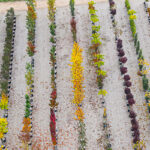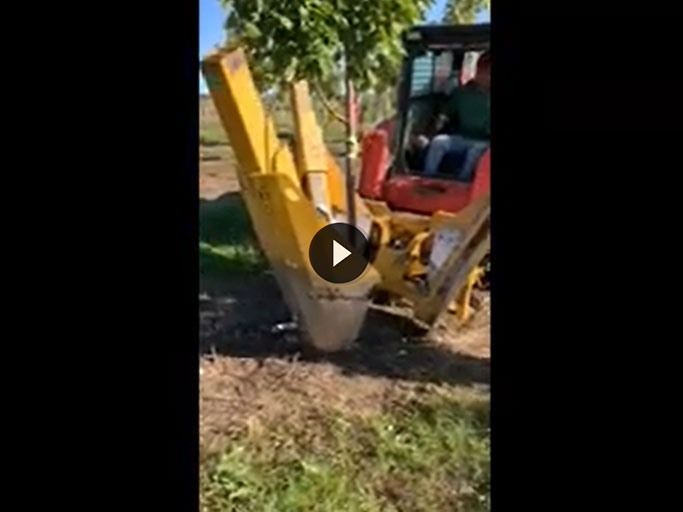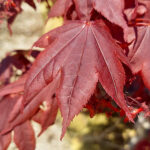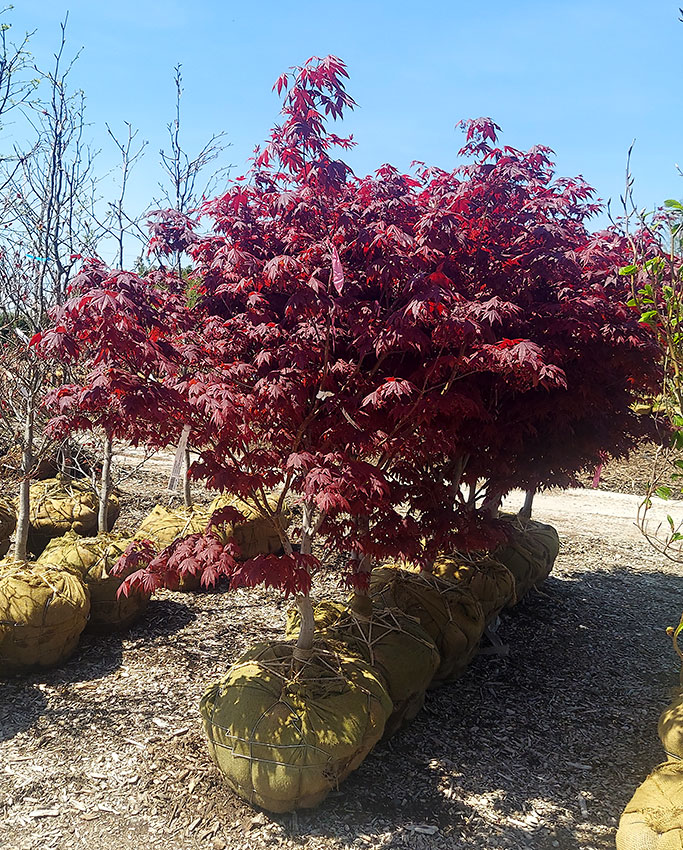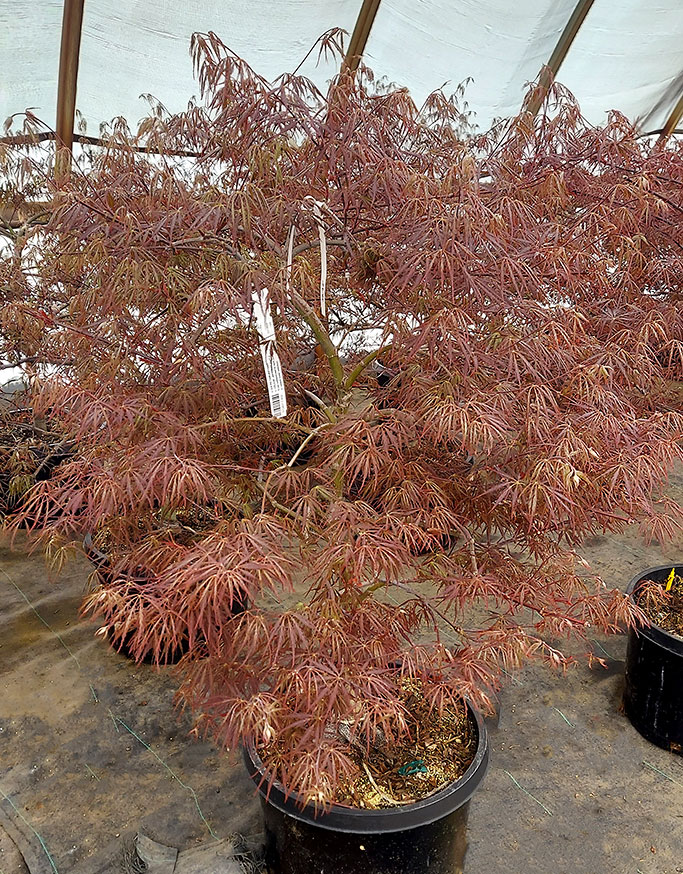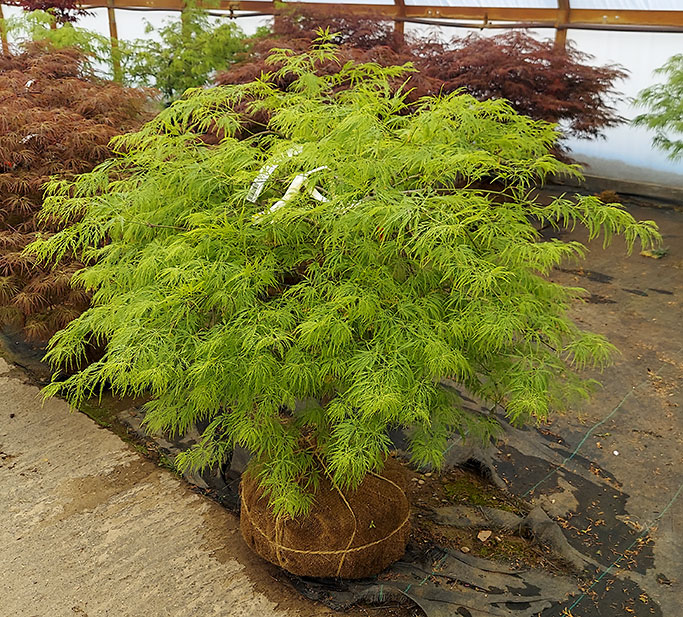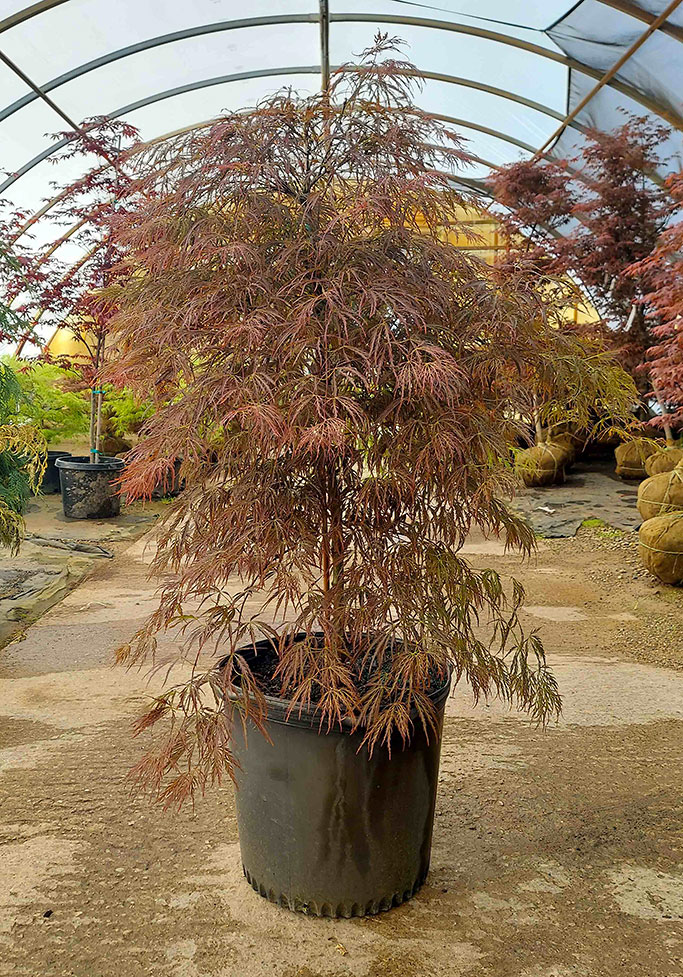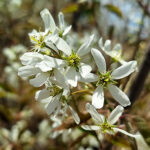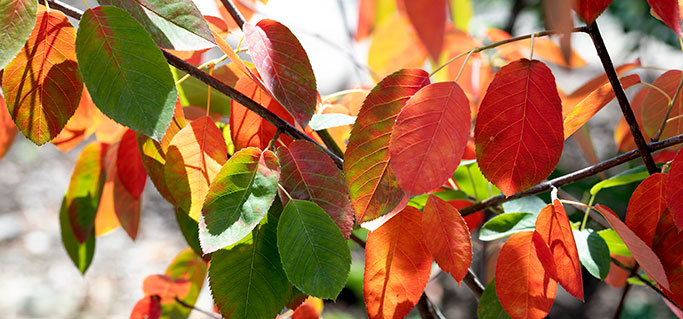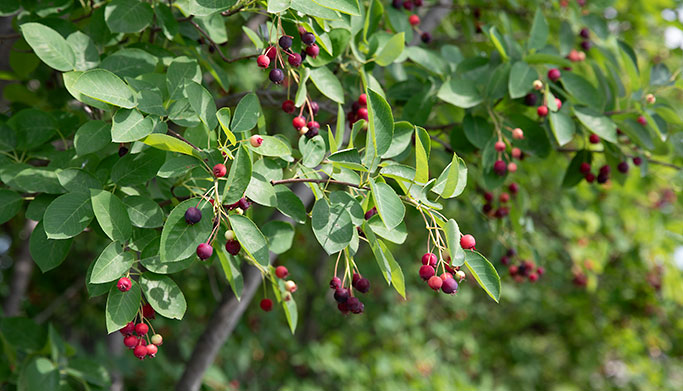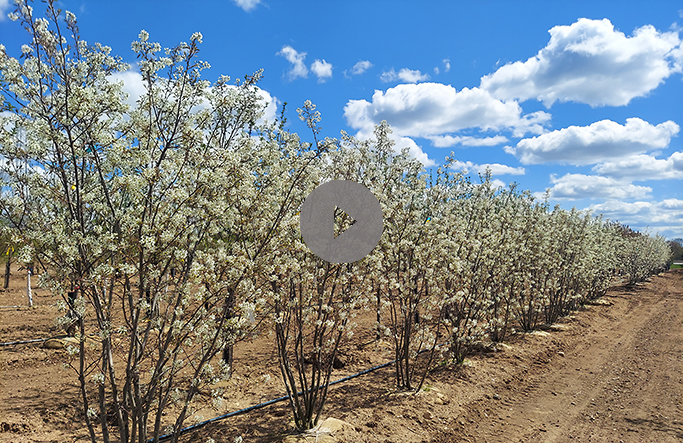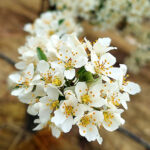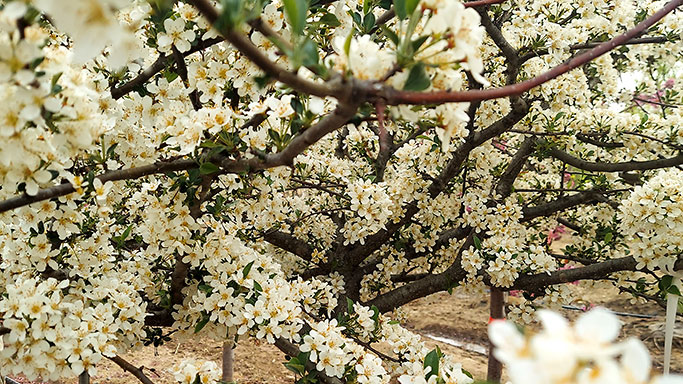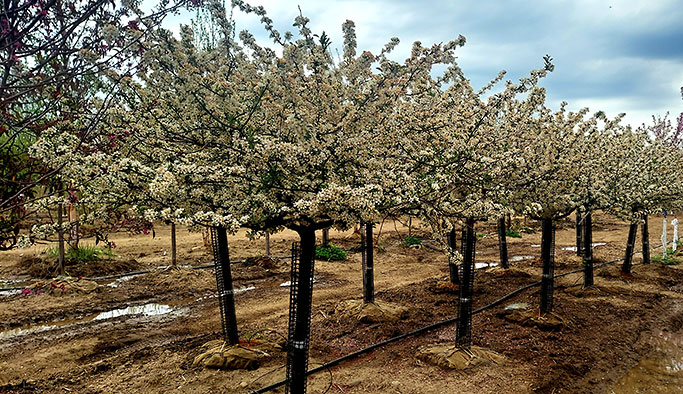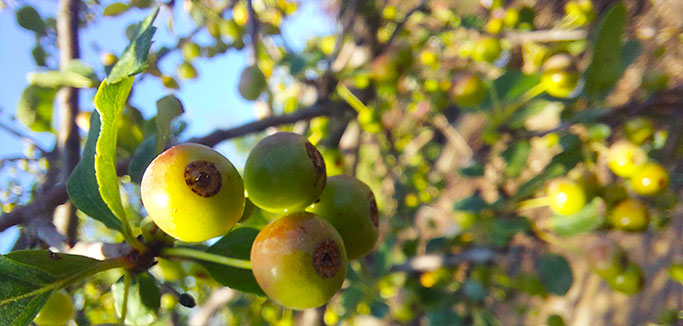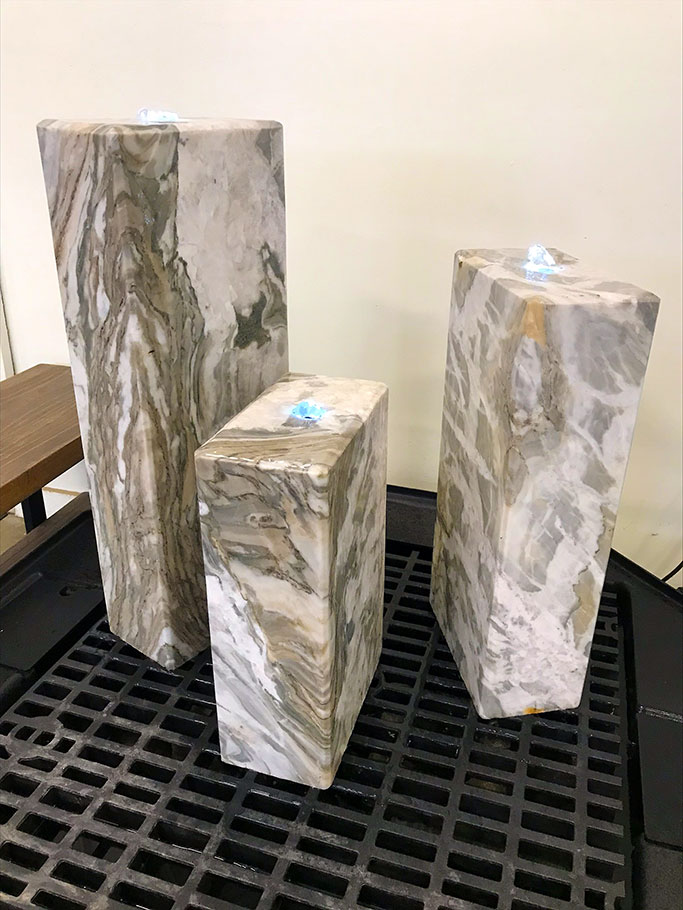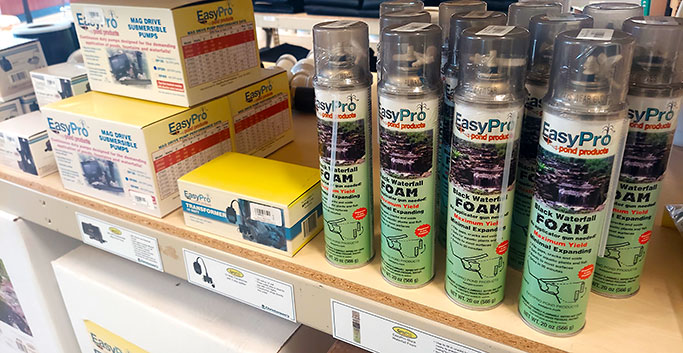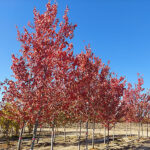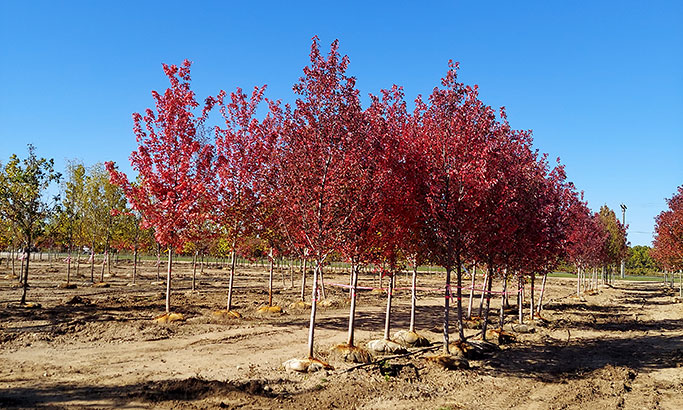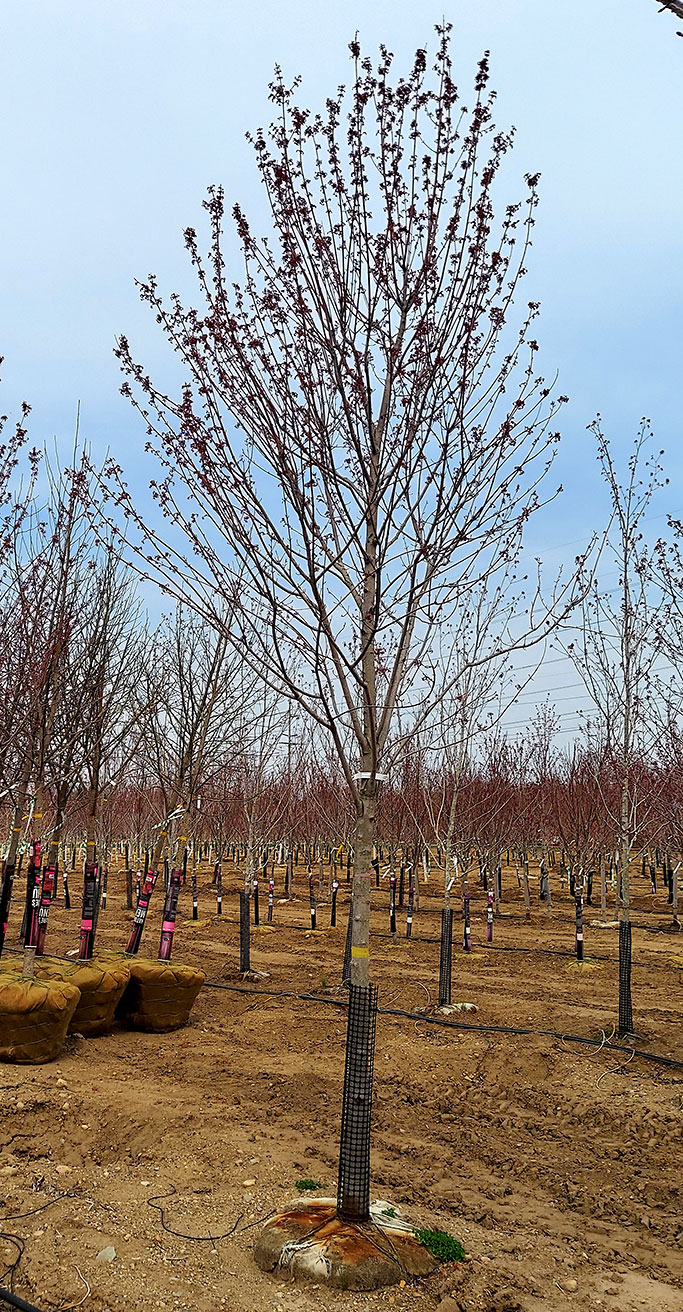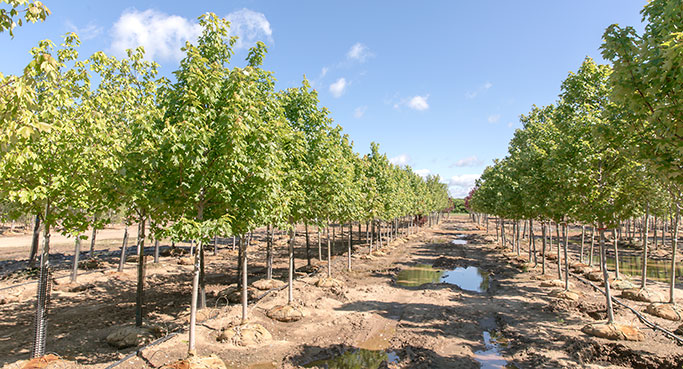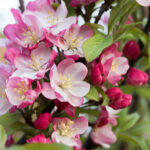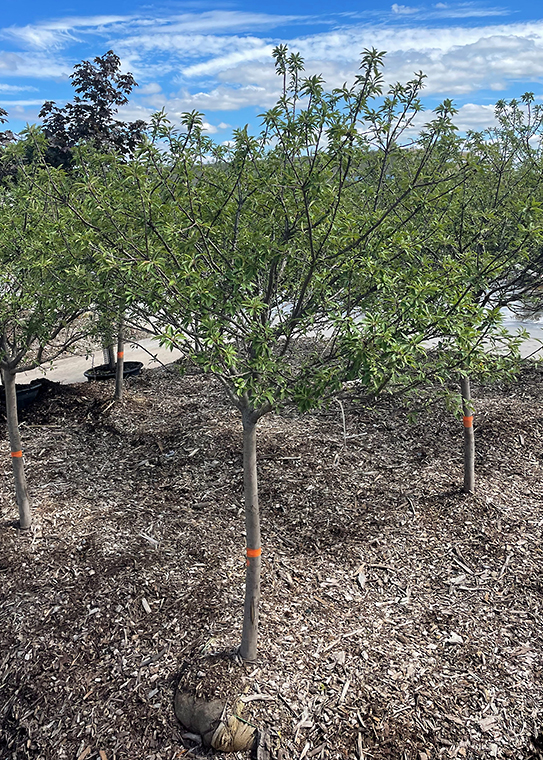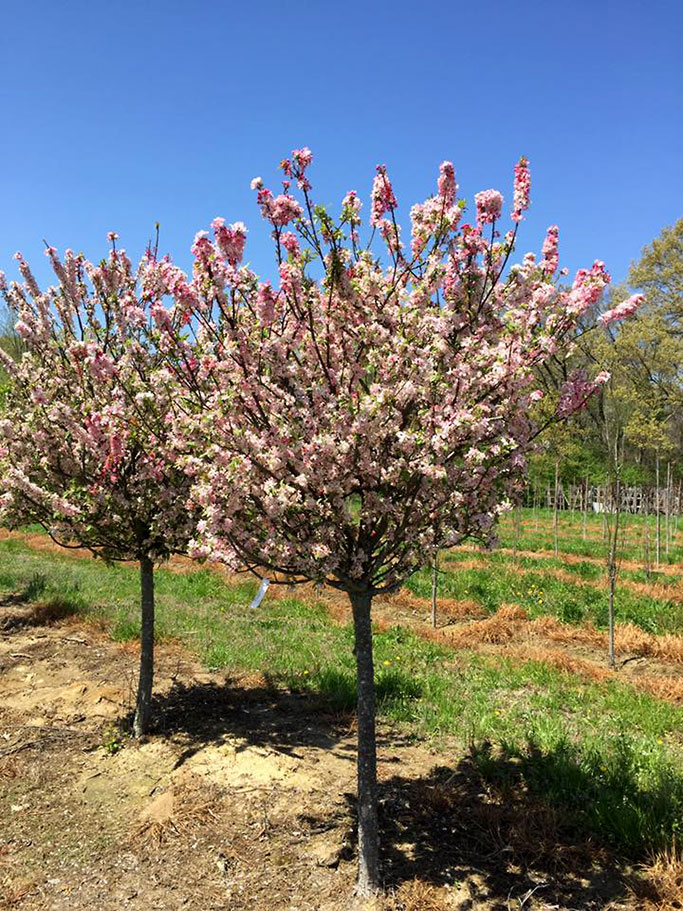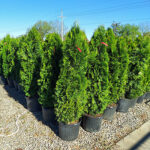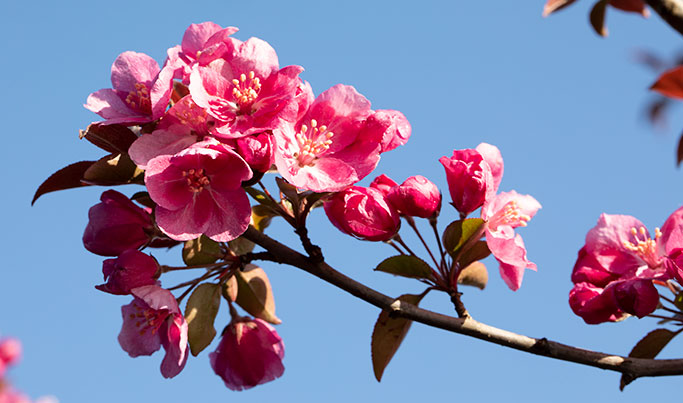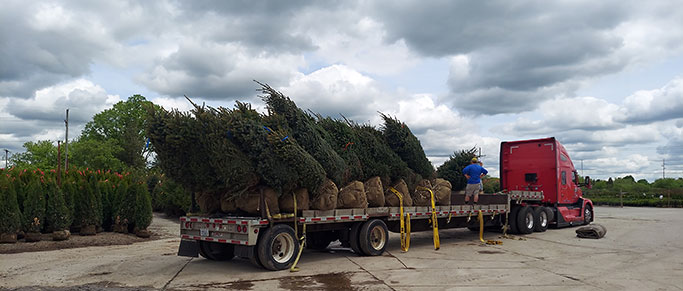Every year as we start to bring in fresh trees in the fall we hear requests for any and every kind of tree. Unfortunately for us, the cold winters here don’t allow for just any tree to be dug and replanted in the fall. It is a great time to plant trees that have previously been dug and given time to recover in our yard. However, it can be dangerous to dig certain trees late in the year depending on the growth habits of the species and other environmental factors. There are many trees we try our best to avoid digging in the fall to protect ourselves and our customers from finding dead trees in the spring when everything else is nice and green.
Most trees go into dormancy in the fall, entering a state where metabolic processes slow down so they can survive the winter. Digging trees in early spring while they are still dormant minimizes the stress caused by cutting its roots and transplanting it. The root system is preserved more effectively, allowing the tree to recover quickly once replanted. As it warms up in spring, they break dormancy and start putting on new growth which is ideal timing for reestablishing the root system after being dug. Trees dug in spring also have the advantage of cooler but warming temperatures and higher moisture. This combination reduces how much water the tree is losing and provides ideal conditions for recovery. Most species acclimate to their new surroundings better when dug in the spring. This is why we bring in thousands of trees in the spring and hold them year-round. It gives the trees a chance to recover until you need them and minimizes the risk of transplant shock or failure to make sure your newly installed landscape looks good and will last.
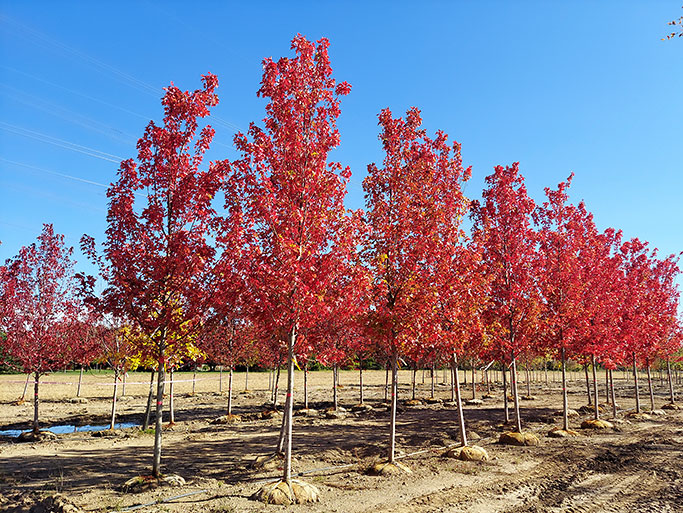
Some trees are better suited for fall digging and can reestablish roots before winter. Most species of Amelanchier, Crabapple, Ginkgo, Linden, Lilac, and Maple do well with fall digging and some even seem to do better, avoiding transplant shock. These trees will still develop roots in the cooler months after being dug. With the ground still warm but air temperatures cooling, growth can continue even as the tree's leaves drop. This late growth enables the tree to adjust and recover before winter, preparing the tree to absorb moisture and nutrients from the soil as soon as the weather warms up in spring. During spring, the tree’s energy is directed towards new growth and root development, instead of recovery, which can result in stronger and more vigorous plants. This can enhance the overall health of the tree, making it more resilient to inclement weather, diseases, and pests. In contrast, spring digging can lead to transplant shock, as trees may struggle to adjust and recover while also trying to grow new leaves.
In conclusion, digging and replanting trees is a practice grounded in ecological and botanical science. The combination of biological factors such as dormancy cycles and growth rates with environmental factors like soil conditions and moisture determine the optimal time for digging. By timing the transplanting process correctly, one can set the stage for healthy, vibrant trees that will thrive in their new environments for years to come. So, if you see a tree with some old deteriorating burlap in the fall don’t be too quick to write it off. That tree is not “old”, it was intentionally dug in the spring according to the best botanical practices and held all year just waiting to be planted. It has survived the stress of digging and is primed for replanting, more resilient and ready to thrive in its new environment.

